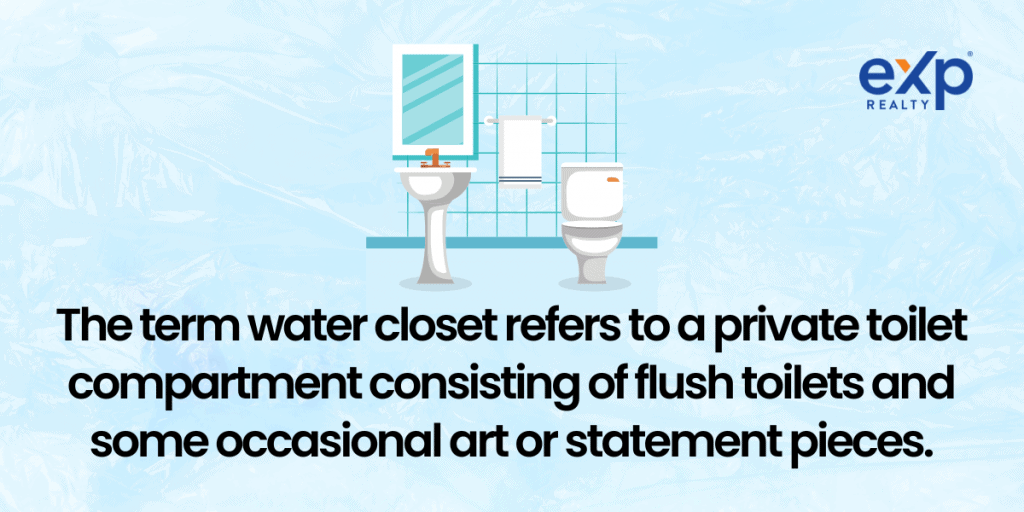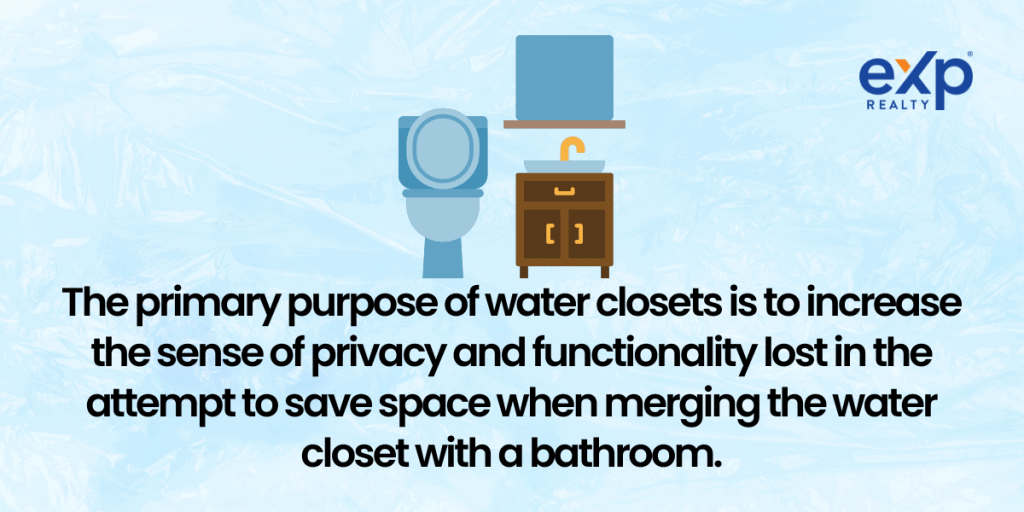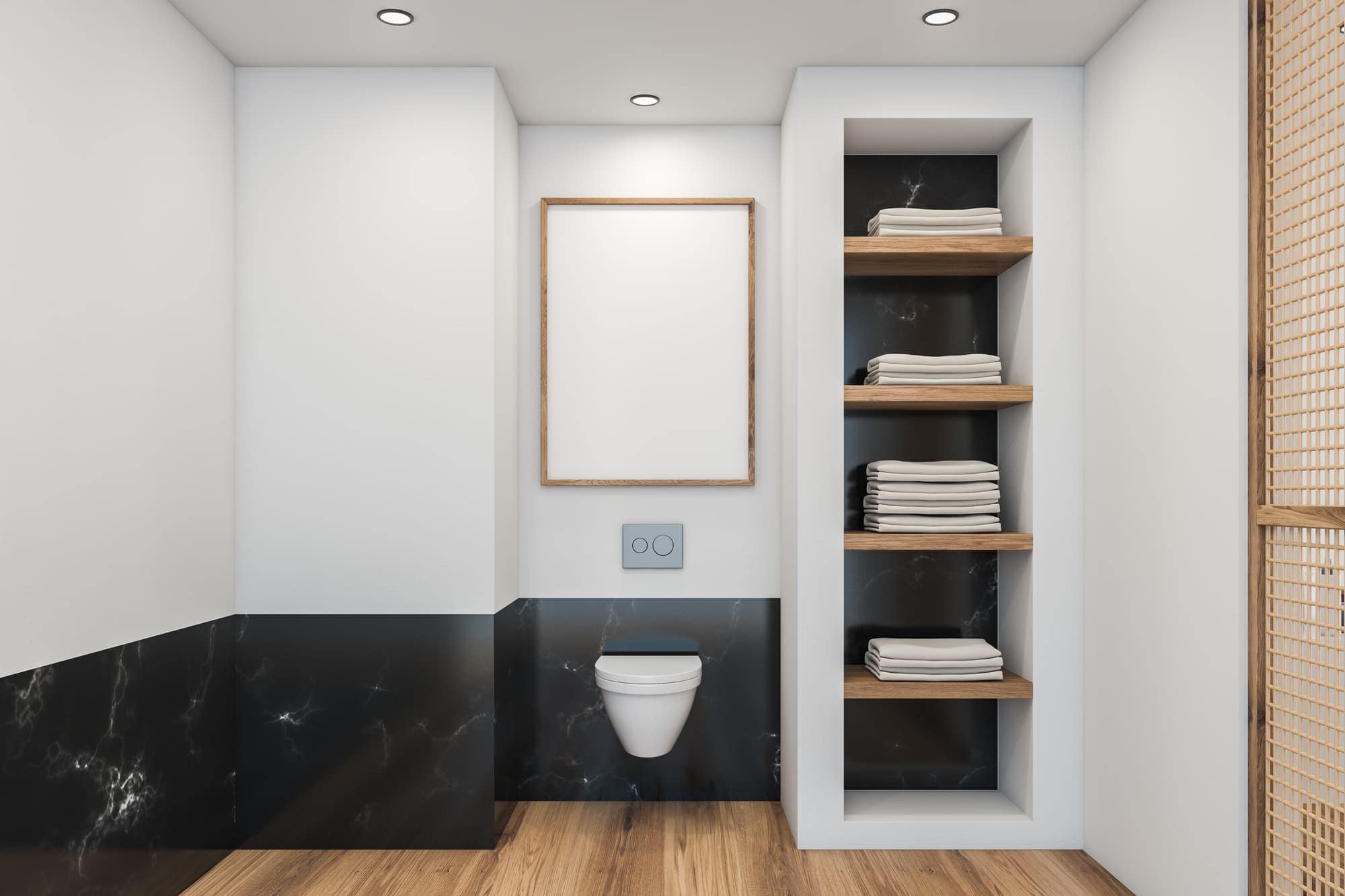The term water closet is nothing short of a puzzle. Depending on the period in real estate you are referring to, it can mean anything from a confined space with a toilet (19th century) to the toilet itself. It might also mean a room with a toilet and a sink. If you are wondering what all the fuss in the current real estate market is about, whether you’re looking into Chicago real estate or Miami, then you are not alone.
Many property listings currently have the term separate water closet or “private bathroom reading room” in the primary bathroom or other shared bathrooms. In both of these cases, the homeowner is trying to draw attention to what will be described below as the modern-day water closet. The aftermath is a spike in property value concerning similar houses without this magical reading space.
So why should you pay extra for a space to read your magazine? Well, this only works if you are an avid reader. However, if you are a home buyer looking for a bit more privacy, or a home seller seeking to raise your property value, read on to be in the know of the latest luxury item to grace our bathrooms.
What Is a Water Closet?

The confusion surrounding the term water closet arises from the changes in meaning over the years. In the early 19th century, indoor plumbing was still a new concept. For this reason, people relieved themselves in outdoor squat toilets. Nonetheless, there were separate rooms indoors designed for bathing, thus the term bathrooms.
However, an influx in wealth and hygienic public awareness led to the incorporation of a separate water closet and a room with a toilet bowl inside (you either had to be Queen Victoria or equally rich to afford this luxury), all thanks to Sir John Harrington. Thomas William (aka Thomas Twyford or Thomas William Twyford) played a crucial role in popularizing water closets in-ground space.
Over time, Sir John Harrington’s water closets found themselves in everyday households and have remained dominant in houses in the more significant part of Europe and Asia. Another plumber, Thomas Crapper, is thought to have made Sir John’s design flushable. However, Thomas Crapper’s contribution remains a mystery.
Later on (early 20th century), American engineers came up with an ingenious way to save space by accommodating the traditional bathroom and the water closet (toilet space), and this was by merging them into a seamless design. This set the stage for what is popularly known as the “bathroom.”
The term water closet refers to a private toilet compartment consisting of flush toilets and some occasional art or statement pieces. In the American real estate market, these compartments are reserved for newer properties on the high-end market.
Most people use the terms “water closet” and “toilet” interchangeably, but this is incorrect. Accurately speaking, a water closet is a room unless you live in some parts of Britain, where the toilet is a gimmick of sorts. Separate water closets differ from lavatories in that lavatories often refer to indoor toilets with a sink, which is absent in most water closets.
What is the Water Closet’s Main Function?
If you’ve ever had to do a bathroom dance outside while another person was brushing their teeth in the bathroom or simply taking a shower, you inadvertently contributed to the popularity of water closets. The primary purpose of water closets is to increase the sense of privacy and functionality lost in the attempt to save space when merging the water closet with a bathroom.

Incorporating a water closet in your bathroom’s design is essential in shared bathrooms, such as in master bathrooms, luxury hotels, where the bathroom is shared between a couple, or in households where the number of bedrooms far outnumbers that of the bathrooms.
In this case, one person can take their time reading their favorite magazine while going about their business without imposing some unpleasant sounds and smells on another person who might be washing their hair, brushing their teeth, or even showering in the space of the bathroom.
In addition to privacy, water closets also serve a hygienic purpose. It has been speculated that flushing the toilets releases a load of bacteria into the air, and having your toothbrush in the line of fire is anything but hygienic.
New research suggests that this spray of pathogens from the water stream can hover for several feet, and thus introducing a barrier to protect the bathroom space is only natural.
Differences Between a Water Closet and a Bathroom
There are several distinct differences between bathrooms and water closets, many of which are centered on their functions and fixtures. An in-depth clarification between these two compartments for personal hygiene is highlighted below.
The Role of Water Closets and Bathrooms in a Modern House Design
While water closets are used almost exclusively for personal relief purposes such as urination and defecation (and the occasional light reading), complete bathrooms serve a more comprehensive range of distinct functions that accommodate personal hygiene and relief purposes. Often, when you say you are going to the bathroom, this might be interpreted as going to freshen up or relieve yourself.
Bathrooms have facilities for brushing teeth, showering, brushing hair, shaving, powdering up, and even washing that are absent in water closets.
Bathroom Fixtures and Products vs. Water Closets
Water closets usually have limited plumbing products that include a toilet bowl, an occasional sink (may or may not be present), and a light fixture to save the room from complete darkness, which is considered a modest setup when compared to a fully functional bathroom.

On the other hand, bathrooms usually have a wide range of bathroom fixtures, depending on the scale of the project, budget, and aesthetic desired by the homeowner. Standard fixtures in many bathrooms include a bathtub or shower heads, a bidet, multiple sinks (some with drinking water), faucets, and valves, a shower seat, hand-held shower spray units, a seat wall, and even a control wall.
Concerning the overall fitting of plumbing fixtures to the general plumbing line, water closets usually have a single connection that consists primarily of the water supply and flushing mechanism. Conversely, bathrooms have multiple valves, pipes, and fittings that regulate various factors in the more extensive system.
Often high-end showers have a shower spray unit, quality shower floors, adjustable-height shower head, or even a fixed-position shower head.
Advantages and Disadvantages of a Water Closet
As much as water closets might sound like a worthy addition to your bathroom (if you don’t already have one), they are reasons for and against installing an extra compartment in a fully functional bathroom. So, what are the advantages and disadvantages of a water closet?
Advantages of a Water Closet
There are many advantages to having a water closet in your bathroom, many of which have hygienic or privacy ties. That said, the benefits of a water closet include the following:
Privacy
Whether you are trying to save your partner from listening to your rendition of Journey’s “Don’t Stop Believing” or are trying to keep them from listening in to what would be an embarrassing assortment of sounds and smells, the free-standing water closet’s confined nature provides you with ample privacy to go about your business in peace.
If you share the bathroom with your kids, you can save time washing up while they do their business in the toilet (everyone stays happy).
Hygienic Reasons
If you don’t remember to put down the lid when flushing the toilet, then your health might benefit immensely from separating your toilet from the rest of the bathroom. Bacteria colonies such as those of E. coli have been found to populate the sink and other bathroom surfaces, secondary to dispersion from the water stream released when you flush the toilet.
Having a water closet means focusing on what matters (in the bathroom) without worrying about bacteria from raw water landing on your favorite toothbrush.
Extra Storage Space
Putting up a water closet in many households means adding a wall or two to the wall adjacent to the existing bathroom. Interior designers often exploit this to create extra space for a wall closet.
The average bathroom is often sorely lacking in the storage department, and thus, a few extra shelves on the adjacent wall to tuck away some essential hygienic products or display a beautiful set of towels might come in handy.
Aesthetic Appearance
When done right, a water closet can work wonders in improving the overall aesthetic appearance of the bathroom. This is mainly because the toilet is tucked away and hidden from sight. Additionally, some creative designs, such as using furniture as a divider between the water closet and bathroom, can uplift the creation of the bathroom without sacrificing functionality.
Other popular ideas include using frosted glass (for a modern take on the water closet) or a rustic wooden wall to act as the divider. To avoid the darkness or bleakness associated with water closets, you may incorporate wall art (through wallpapers, paintings, or accent walls), a light fixture, or even a window on the door into the overall design of the wall closet.
Property Value
Adding a water closet to your bathroom is a cheap way to spike the value of your house should you consider putting it back on the market in the future.
Disadvantages of Water Closets
There are several disadvantages of water closets that, include:
Uneconomical Space Utilization
Many regulatory bodies recommend that water closets be 36 inches wide and 66 inches long for optimal standing and sitting in the bathroom. If you have a small bathroom, this might be inconvenient as it takes up much of the space, leaving the shower area with impractical dimensions.
The grab bars for water closets also need to comply with 609.2.2 non-circular cross-sections and circular cross-sections. This might interfere with minimum space requirements.
Additionally, the small confined space of the water closet and the hovering grab bars for water closets may trigger claustrophobia in some people.
Limited Functionality
Everyone has an opinion on how to make the water closet more functional. While some recommend a door that opens inwards to economize on space, others prefer an outward open door to make it easy to access someone that needs help inside the bathroom. However, the best solution would be to have sliding doors that fit into a pocket in the wall.
Key Takeaways
The water closet is essential to any home, especially when the bathroom is shared between multiple people.
Suppose you are looking for the opportunity to enjoy more privacy in the toilet while going about your business or are tired of waiting outside for someone to finish washing their hair before you can use the bathroom. In that case, consider installing a water closet in your bathroom or searching for properties that have water closets already built in.
FAQs
Here are some frequently asked questions about water closets.
What is the difference between a water closet and a bathroom?
The difference between a water closet and a bathroom lies primarily in the fixtures available. A Water closet is a compartment with a toilet bowl, lid, and sink, while a bathroom has a toilet, sink, faucets, a bathtub, or even a shower and can be used for bathing and washing.
Is the water closet a toilet or a bathroom?
The water closet is neither a toilet nor a bathroom. This might have been true in older times in the U.K., but the modern water closet currently refers to a confined compartment with a toilet and sink.
What is the importance of a water closet?
A water closet is vital for maintaining privacy and hygiene in shared bathrooms, such as the primary bathroom, or in households with limited toilets.





